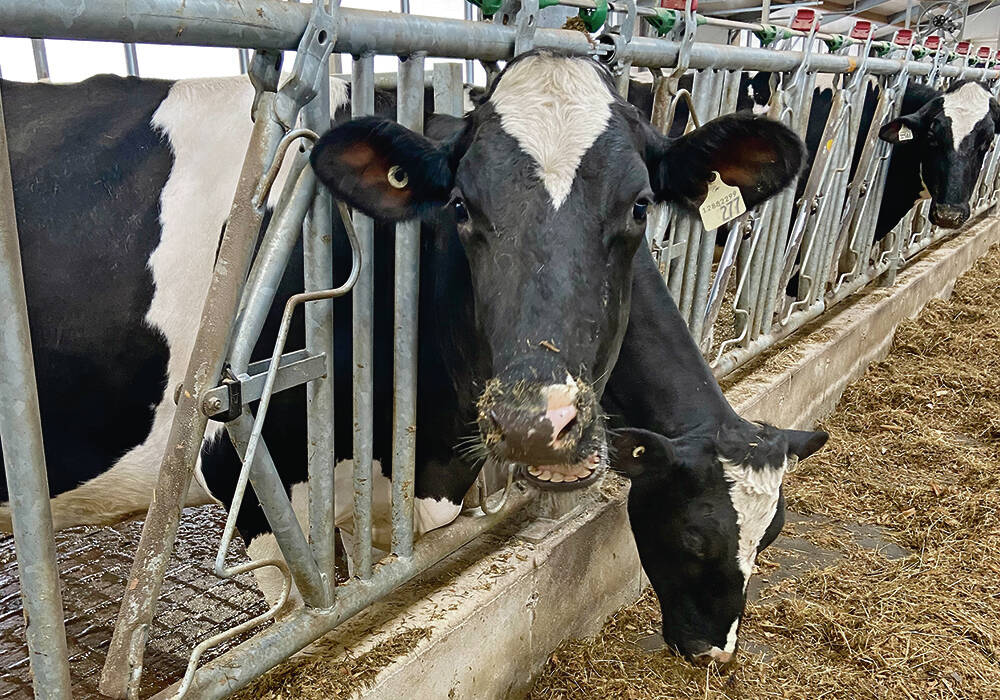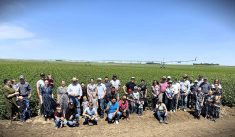A decade ago, Brady Valgardson knew he had to do something about wind erosion on his farm. Cover cropping was the solution.
“As we started doing that, I just read more and more about the benefits to the soil from those same cover crops, how they can hold on to your nutrients and improve water filtration,” said the Taber-area farmer who grows specialty crops on irrigated land.
“Over the years, I’ve been doing more and more of it, and experimenting with multi-species cover cropping.”
Read Also

Alberta Milk opens annual hospital fundraiser
Alberta Milk embarks on holiday season campaign to raise money for Alberta Children’s Hospital Foundation
And while cover cropping has controlled erosion on Valgardson’s land, and produced some small improvements in the levels of soil organic matter, the jury is still out on whether cover cropping is a fit for most farms in Alberta.
Part of that is the high level of management that comes with cover cropping.
“You’ve got to know what your rotation will be the following year,” he said. “And there’s the expense and labour involved. You’re basically seeding twice a year, which is a lot of extra work.”
But the federal government wants to tempt a lot more farmers across the country to follow in the footsteps of cover crop pioneers like Valgardson. Ottawa’s On-Farm Climate Action Fund is putting $183 million on the table ($33 million for Alberta alone) to encourage uptake of three practices: cover crops, rotational grazing, and 4R fertilizer stewardship.
And while the latter two practices are well established with many enthusiastic practitioners in Alberta, there are a lot of questions about whether cover cropping will work during the short Prairie growing season.
After 14 years of experimenting with cover crops, Andy Kirschenman knows one thing for sure — you can’t just cut and paste cover cropping methods that were created in the U.S.
“We can’t do what they do in the States, mostly in the Midwest, because it doesn’t work,” said Kirschenman, who farms near Hilda close to the Saskatchewan border. “We don’t have the growing season to make cover crops work after a grain crop.”
He said he started growing cover crops out of curiosity as much as anything.
“I thought I’d try cover crops because it looked like a good thing to do, but I didn’t even know what our goal was going into it,” he said. “That’s an important thing to know — what you’re trying to accomplish with anything.”
The ‘slam dunk’
For many, cover cropping makes the most sense when you’re running cattle. And that’s Kirschenman’s view, too.
“I think the slam dunk for cover cropping is when you can graze it or you can bale it,” he said, adding he has an arrangement with a nearby cattle producer who grazes his cows on Kirschenman’s land.
“Grazing is probably better than baling it because you’re putting manure back on.”

That’s certainly true for cow-calf producer Marty Lawrence, who said he went “full bore” on cover cropping two years ago.
“I first started with 50 acres, but it worked so good that I went to 500 acres,” said Lawrence, who worked with cover crop advocate Kevin Elmy to learn the basics.
“I have swath grazed for 25 years. I’ve tried everything. Mostly it was monocultures, but once I got into cover crops, that’s where the magic hit.”
The practice builds on soil health lessons he has learned from experts such as Gabe Brown, Nicole Masters and Kris Nichols (as well as countless hours watching YouTube videos on soil health and cover cropping), said the Stettler-area rancher.
But the effort has paid off and the grazing capacity of his operation has doubled over the last 25 years, he said.
His cows do most of the work by eating his cover crops, he noted, and during the drought they became an even more important source of feed.
“My cover crops last year saved my bacon,” said Lawrence. “I’m totally hooked on cover crops.”
Seek help
Lawrence has two pieces of advice for those interested in cover cropping — start small and find others in your area who are using the practice and talk to them.
Kirschenman makes the exact same recommendation.
“The biggest learning curve is not to do as many acres,” he said. “Make sure you try different spaces and talk to people who do it, including the seed salesmen who are in your area, to find out what actually works and what seeding rates work.
“Local knowledge is the best way.”
For Valgardson, the biggest benefits have been the reduction of wind erosion, and better water infiltration.
“I have fields that are very sandy,” he said. “Any time we have a potato crop or a sugar beet crop that leaves no residue after harvest, the land blows away. So we’ve been putting covers on those for erosion control.”
While he is glad to be growing cover crops, Valgardson said that there is more work and planning involved. And while talking to other farmers in his area and watching YouTube videos has been helpful, that only takes you so far, he said.
“A lot of it is just experimenting — I have tried things that I shouldn’t have done that potentially could have been a huge disaster,” he said.
“It would be nice if there was more research done and some guidelines to help people through the whole thing, as well as some actual evidence that it is providing the benefits that everyone claims.
“That would be nice to know. It is a lot of extra work.”
And there’s also a lot of judgment calls, added Kirschenman.
“There’s a lot of information out there, and lots of information applies to lots of wide geographic areas,” he said. “We have to figure out what works and what doesn’t in our area, and what is reasonable and what doesn’t work here.
“I think that’s the big thing — knowing how to take the principles and apply them, not using the exact practices that we see in other places.”
Still, Kirschenman sees many benefits to the practice.
“You can incorporate different species in your farm that you couldn’t incorporate as a cash grain crop,” he said, adding he has tried warm-season grasses and warm-season broadleaves (such as sorghum and millets).
“It’s basically coming back to diversity.
“Where we are with fertilizer prices right now, especially if our crop prices go down, but our fertilizer prices go up, it may make sense to grow nutrients to grow nitrogen rather than spend money to buy nitrogen.”
Cover crops are a way to boost soil health and that will be increasingly important in the years ahead, said Lawrence.
“These input costs are going to break us. We have to stop it,” he said. “Fertilizer, spray and fuel has gone mad. Agriculture has a bumpy road ahead.”
















